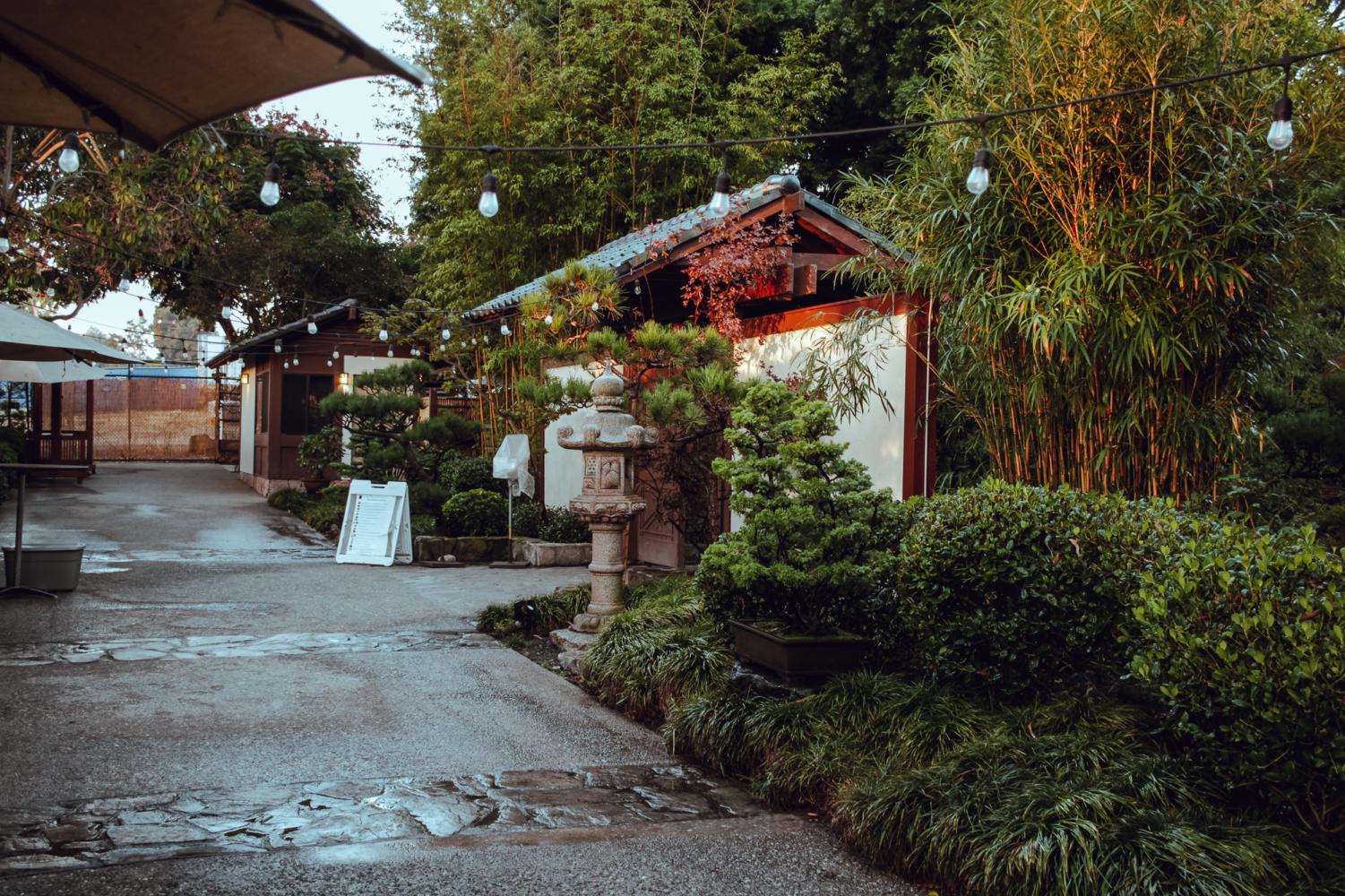The Earl Burns Japanese Garden, home to Japanese imported Kasuga lanterns, bonsai and evergreen trees and a tranquil koi fish pond, has begun its plan for maintenance and further development.

Ducks and koi fish can be found lounging in the pond located at the Earl Burns Miller Japanese Garden Oct. 23, 2017.
To help pay for this, Jeanette Schelin, the director of the garden, has implemented a new admission charge toward the general public this semester for a sustainable revenue stream.
Currently, university students, staff, faculty, those with memberships and kids under the age of four have free access to the Japanese garden. As for other visitors, admission for adults is $5, for seniors and alumni is $4 and for children ages 4-18 is $2.
Schelin said she thinks the charge is helpful for sustainability as there has been a recent increase in foot traffic.
“Each year we’ve noticed a tremendous uptick with the amount of people visiting the garden from the general public,” Schelin said. “For the last seven or eight years, our estimates of use here have been rising and rising and we felt we have hit that critical mass of people. So it became sort of viable to [start charging].”
According to the Schelin, planning for future development by university members and architects plus consultants from different campuses, started in 2003.
“We knew that in the future…we would need to start charging for admission because it’s in the life cycle of an organization,” Schelin said. “At some point, a need for resources outstrips the revenue stream.”
According to Schelin, the location needs the revenue because it does not have a visitor center and only has one restroom.
Carlos Vasquez, a criminal justice major, 19, believes that the new charge will deter his family and many others from visiting the garden.
“My family comes and visits me and the Japanese Garden is like a staple of this university,” Vasquez said. “They should be able to visit the garden and enjoy its beauty like anyone else without charge. I feel like [the garden is] going to lose a lot of people who visit. I live here in the dorms and I see a lot of students bring their family there.”
Hospitality Management major May Sanshisa, 24, noticed different trends among visitors in the garden.
“I seen like it’s getting less [sic] people because some people don’t want to pay,” Sanshisa said. “But at the same time, our regular guests who join our membership [come].”
The Japanese garden is 36 years old, yet many of the trees encompassing the space only have a lifespan of 40-60 years, according to Schelin. When they were added to the garden at its inception, they were already three to five years old.
Schelin pointed to a birch tree nearby. “They’re so pretty,” she said. “One time we had seven more than what we had right now.”
However, other than the trees’ old age, other environmental problems have led to the plants’ detriment.
“The drought severely impacted those trees,” Schelin said. “And then the shot hole borer, which is a beetle that is really ravaging our urban forests and even the forests out in the mountains, got in. So I had to remove a large number of these [trees], and a lot of the ones you see that are still here I know they’re going to go soon too.”
Before the admission charge, the Japanese garden relied primarily on hosting private events and membership fees and partly on university support. According to Schelin, the university helps pay for salaries of the director and associate director of the garden as well as a full-time gardener. However, since the garden is considered an enterprise area, it must be as self-sustaining as possible.
Members of the garden are pushing for the general public to purchase membership cards for $50. Basic benefits include free access to the garden as well as to over 350 gardens in North America through the American Horticultural Society.
“I think preserving our green spaces everywhere is a very important and worthwhile cause,” Schelin said. “Gardens are expensive. Land isn’t getting any cheaper. Spaces to put gardens in urban areas isn’t getting easier. So we really have to take care of the ones we have.”
Sabrina Flores and Joel Vaughn contributed to this article.




